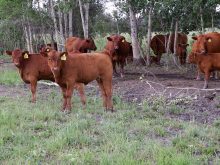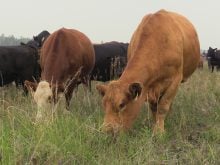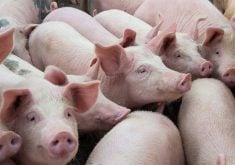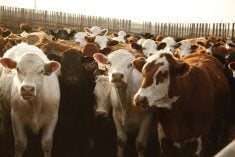PENHOLD, Alta. — When visitors arrive at Ghostpine Farms they must hit the showers before setting foot in the barns.
Next, everybody pulls on fresh coveralls, clean socks and rubber boots that never leave the barn. No visits are allowed 72 hours before or after any visit to another pig farm.
These are the disease-prevention rules at this central Alberta hog farm.
Rebuilt from scratch after a fire in 1988 destroyed everything, Ghostpine owner Dick Allen designed a hog farm that blends proven methods and some innovations of his own.
Read Also
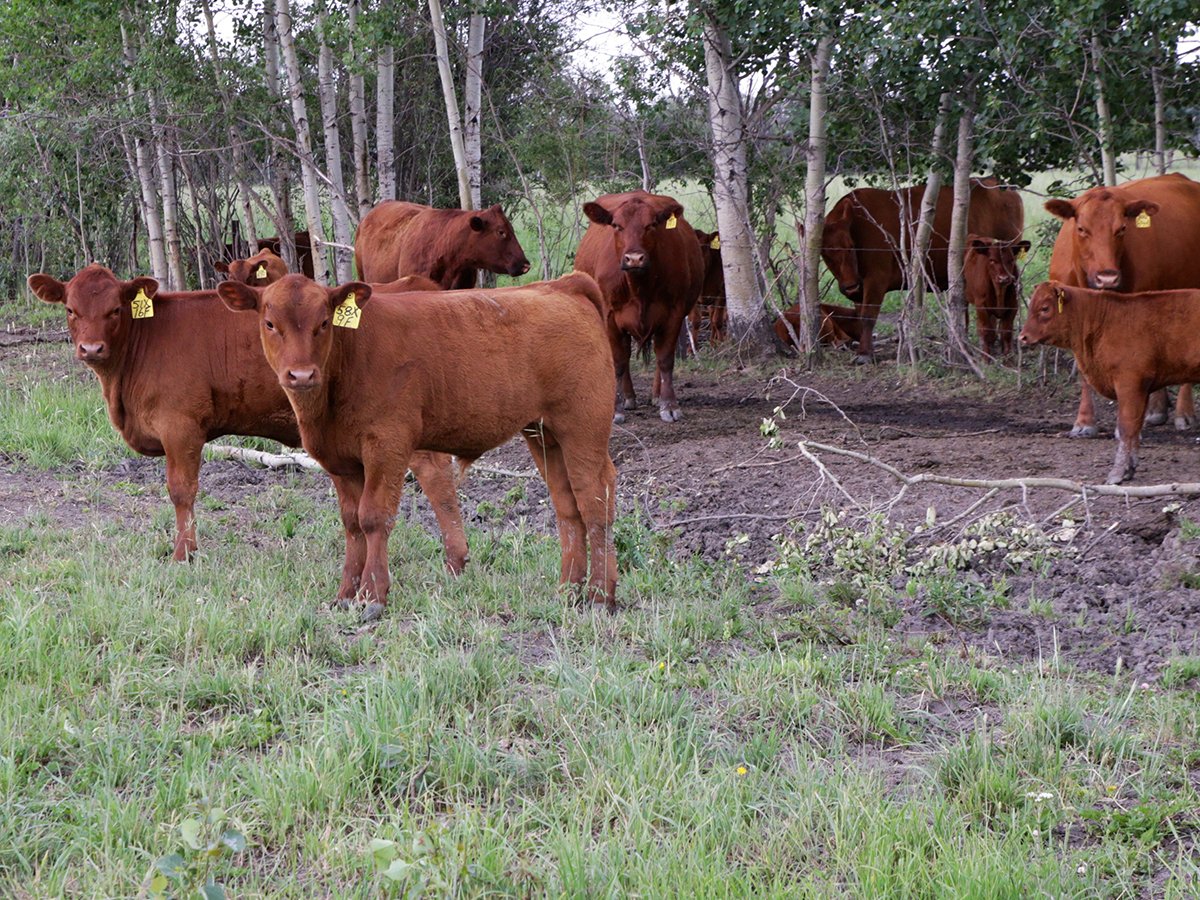
Feeder market continues the climb
For the week ending Aug. 30, Western Canadian feeder cattle markets traded $4-8 per hundredweight higher on average.
The farm has increased the number of pigs it markets each year and experimentation is continuing with new feed rations, home-designed farrowing crates and improved animal husbandry techniques. All farm information is stored in three computers on a program called Pig Champ from the University of Minnesota.
Early weaning practiced
Early weaning is one of the innovations at Ghostpine, partly because there are 750 sows but only 96 farrowing crates, said farm manager Tony Meulenbelt. Some weaners are as young as 12 days but the average is 15.7 days.
After each litter is born, they are sorted by Tracy Worthington, whose job is working with farrowing sows and their piglets. The flow of piglets is kept steady by monitoring farrowing closely. Sows past day 113 in gestation are induced.
To give smaller newborns a chance, they are grouped together and fostered by different sows. One sow may nurse a small group one day and then a new litter of larger piglets will be placed with her to step up milk production because the bigger ones are more demanding. Ninety percent of the sows don’t wean their own pigs.
Piglets do well
Although there are some animal welfarists who say weaning should not be done until the pigs are four to eight weeks of age, Meulenbelt said the sows recover quickly and are rebred sooner and piglets do very well.
“Pigs grow faster off a sow than they do on. They’ve got that stress from going from milk to feed where they’ll slow down for a few days but once they start eating that feed they’ll grow faster than if they’re drinking milk,” he said.
Runts may be held back until their weight improves.
“Some of the runts could be in the farrowing room for four weeks. They’re weaned by their size and if they’re not growing, they get left back until they catch up,” said Meulenbelt.
While some new thinking favors early weaning as a good disease control plan, Meulenbelt doesn’t agree. However a balance is achieved because more pigs are produced when sows are rebred sooner.
“You have to treat more (for disease) because they’re smaller, usually. There’s more labor but I think it does pay off. Even with weaning as young as we are, we’re averaging 23.6 pigs per sow per year.”
To stay at Ghostpine a sow is expected to average 10 pig-lets per litter. If, after her third litter she isn’t, then she is culled. The computer records show Ghostpine sows average 2.55 litters per year and eight litters each in their lifetime.
On each sow stall is a card where the worker writes all daily information. This is entered weekly into one of the computers that tells, among other things, vet costs, feed inventory, growth rates and days to market.
The stages in a pig’s life are more complex at Ghostpine farms compared to some other places. A continuous flow system is used where they are moved six or seven times. For the first few days after weaning they stay in small, heated portable crates on wheels nicknamed “coffins.”
They then move to a nursery, then to a “hot weaner” barn where heating is provided by hot water pipes under the floor. The next stage is the cold weaner area, the grower barn and finally, the finisher barn. With the exception of the dry sow barn, the buildings are double-decker.
Amid all this activity the nine-member staff is expected to treat the hogs well with no yelling or physical abuse. There is almost no fighting among the hogs and they appear content and friendly with their handlers.
Several development stages
Pens are weighed as they are moved from stage to stage and averages are taken to measure performance. Not every pig is weighed.
“We’ll take an average-sized pen and weigh them all, average them and then multiply it out,” Meulenbelt said.
The computer program records all this and a traceback system is possible to see if there are some responsible for throwing small pigs or abnormalities.
Ghostpine retains its own gilts and a few boars. No new gilts have come into the barns in about three years but a new boar moved in last year.
Artificial insemination is used on sows and some natural breeding for first-litter gilts. The top 10 percent of the sows are bred to York or Landrace boars and the rest are bred Hampshire-Duroc for market hogs because of the way the crossbreds perform. None of those is retained for breeding.
The farm sells about 300-350 hogs per week at an average of 218 pounds. The goal is to increase market weight to 225 pounds. About 16,000 pigs were marketed last year.
“We have to ship every week to make room in the barns for the new pigs coming in,” said Meulenbelt.
Feed wheat or barley are the main components of the rations with flax, peas, soy meal and green canola added. Some canola oil is also added to control dust. Pregnant sows are on a skip-a-day feeding plan while the others are free-fed.
The barns are warm, clean, free of dust and there is no odor. Meulenbelt thinks part of that is due to barn design, with its high roof and good ventilation. Wastes are drained off into two lagoons.
To keep computers, heaters and electricity going at all times, the farm runs its own generators fueled by natural gas pools on the property.



